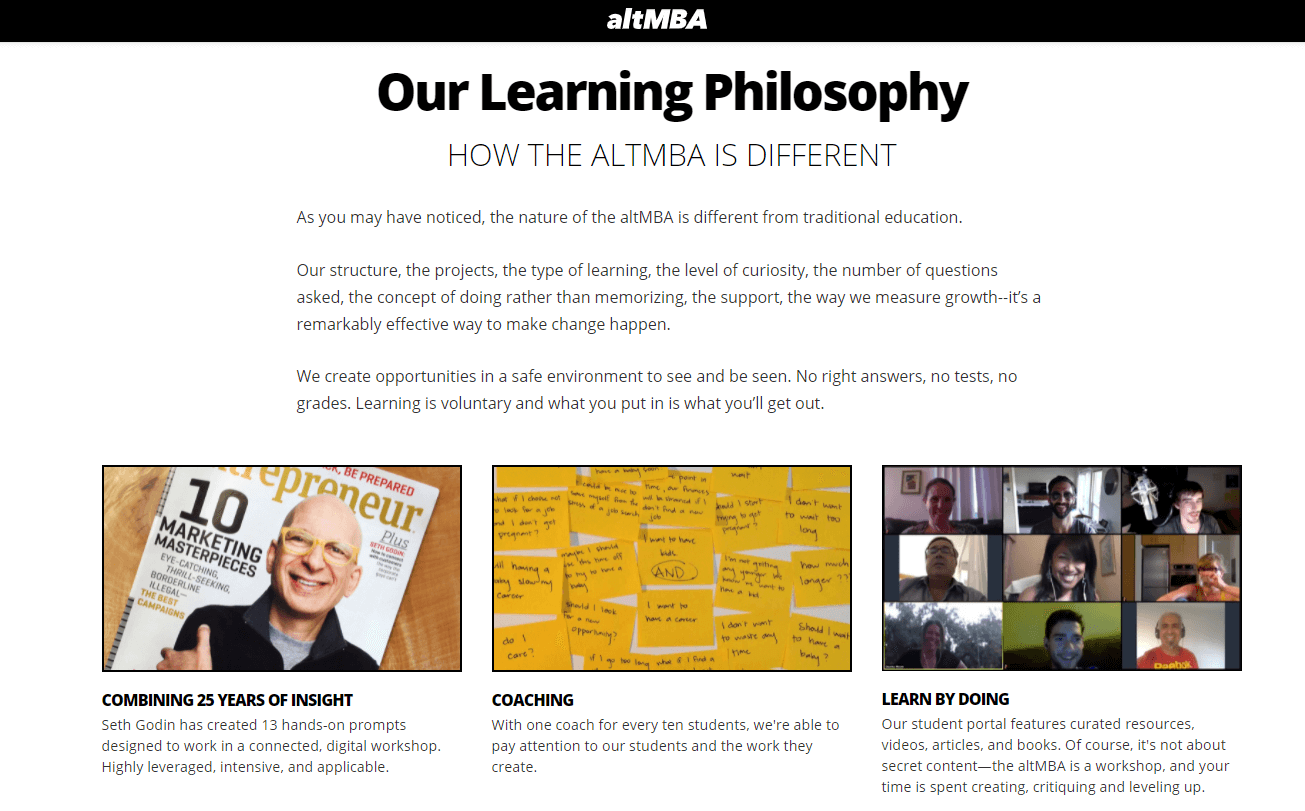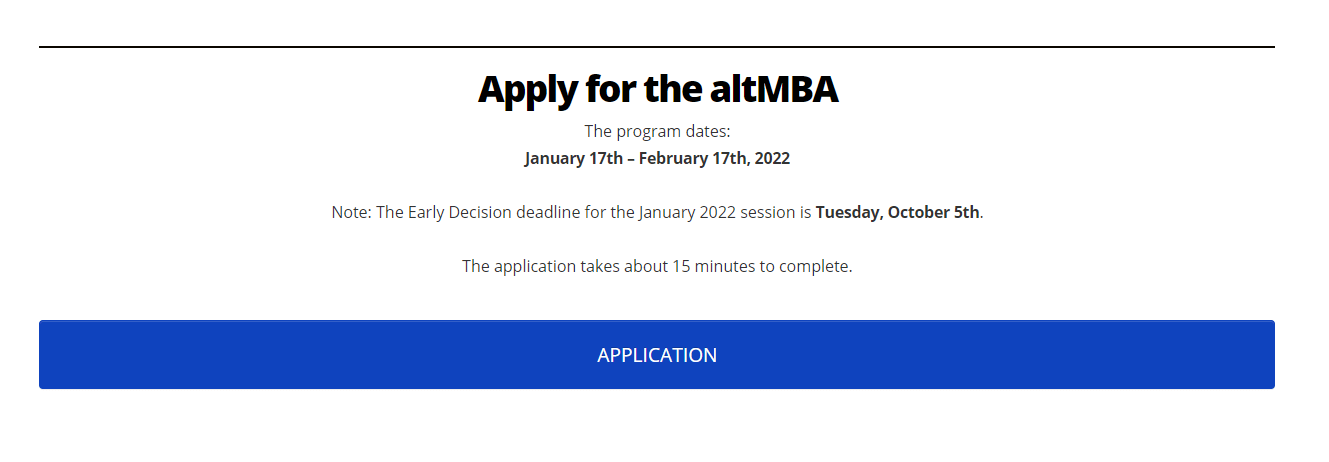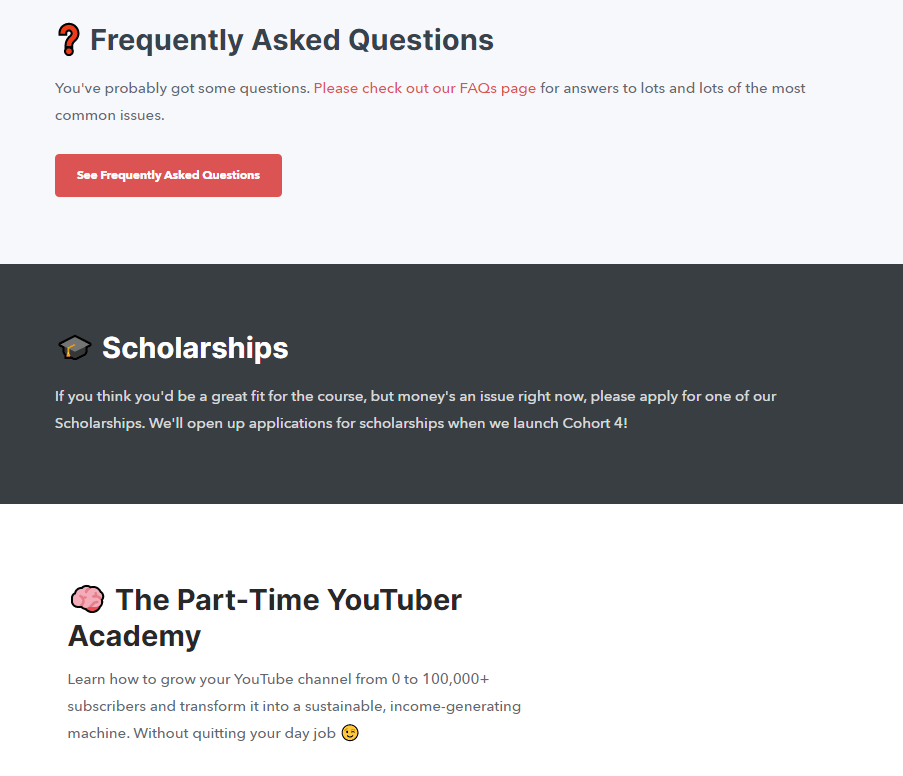The Essential Guide on How to Create Cohort-Based Courses

Table of Contents
If you are a course creator, then you probably already know this: There are many types of online courses and each one serves a different purpose.
While a mini-course helps potential students get an overview of a bigger full-sized course, a masterclass course seeks to delve into the genius of subject specialists and explore a topic through all lenses.
Your professional looking Academy in a few clicks
Start FREE TrialWith a cohort-based course, however, you get something totally different, and its distinctness has made cohort-based learning so popular today.
Since 2020, cohort-based courses (CBCs) have been growing rapidly and in the future we expect them to do so even more. CBCs are preparing us for the next phase of online education. Having the sense of community and collaborative learning at the forefront, cohort-based courses focus more on the individual students and students love them for it.
But, what is cohort-based learning?
Let’s find out what it is and how you can use it to offer the best learning experience to your students.
What are cohort-based courses?
According to the Ed Glossary, a cohort refers to a group of individuals who have something in common. In education, it is commonly used to describe students who are educated at the same period of time e.g. a grade level or a class of students.
Cohort-based courses or cohort-based learning describes a learning style where a group of students (a ‘cohort’) gets to advance at the same time through a curriculum or learning program that is organized around a specific syllabus.
Normally, a cohort course accommodates 15 to 35 students. The syllabus is often divided into sections, and all learners are required to go through the material together. With CBCs, students learn with a hands-on and feedback-based learning approach.
This type of learning is more frequent in traditional educational settings – in elementary, secondary education, or even higher education including colleges and universities. However, it can also take place online, in a virtual environment, or in a physical classroom.
What is the purpose of cohort learning?
The purpose of cohort learning is to allow students to enjoy a more structured collaborative learning experience, by starting and finishing a course at the same time.
For this reason, cohort-based courses have a fixed start and end date and are usually open for enrollment only once or twice per year.
This reinforces the idea that the material taught through cohort courses is scarce and cannot be found anywhere else easily. Despite the fact that there is already a lot of content that is freely accessible on the web, cohort courses are usually taught live, offer well-researched high-quality content and learners get to access it in a timely manner.
Guided by an instructor who is well versed in the subject, students feel like they are participating in a college seminar that offers the direction they need, and the opportunity to discuss and reflect.
The Benefits of Cohort Courses
Cohort-based courses are like traditional classes, but they come with the added benefits of online learning and many more, such as:
Cohort-based learning has higher retention and completion rates. Because of the built-in accountability, students are more likely to complete the course.
According to research, MOOcs (Massive Open Online Courses) have a completion rate of 3 to 6 percent, while cohort courses up to 85 percent. That is almost 15 times more likely for a student to complete a course!
The idea of ‘togetherness’ it offers naturally makes it harder to quit the course altogether. Learners who attend the same live classes, complete the same quizzes and assignments, and study together, have more chances of sticking to the end.
Cohort courses also benefit students who learn better in groups. Whenever they need support, they know they can turn to their peers. Group work discussions help learners develop new perspectives, boost their creativity, and achieve academic success as a study finds.
The Disadvantages of Cohort-Based Courses
Even though cohort-based courses come with many benefits, there are also a few disadvantages that are worth mentioning here. Since cohort-based learning requires your constant attention and involvement, you will need to make sure you are on top of things every step of the way.
When creating a cohort-based course, think about the following:
Group Management
Managing a group of students can be demanding, especially when there are many people coming from different backgrounds, who have different norms and expectations of the course. Having an active role inside the learning community though and setting clear learning objectives and boundaries should keep student frustration and conflict at bay.
Skills Level Management
It is possible you get learners enrolling in your course having varying levels of knowledge on the topic you teach. A cohort of people with varying educational needs can be difficult to handle, and the content may be irrelevant to them depending on their current skills and experience. Make sure to check skill levels beforehand and design learning material especially for them.
Student Participation
While CBCs tend to attract more engagement, you still need to encourage learners to participate in your course at all times. Without a certain number of learners signed up, you can’t make a cohort-based course work, which means you will need to constantly promote your course in every possible way.
Cohort-based courses VS Self-paced courses
In contrast to self-paced courses, cohort-based courses focus on the value of community-based learning. With a cohort-based course, a student doesn’t feel alone and faces the demands of completing a course as part of a team.
Cohort-based learning takes place in real-time. It is more engaging and promotes active learning instead of passive consumption of educational content e.g. watching a static video.
A cohort-based course offers students a more interactive and immersive experience as it allows them to share their own understanding of the course material with each other.
| Cohort-based courses | Self-paced courses |
|---|---|
| Blend of passive & active learning | Passive learning |
| High engagement | Low engagement |
| Group work & exchange of knowledge | Independent student work |
| Schedule determined by the instructor | Flexible schedule |
| Synchronous & asynchronous learning | Asynchronous learning |
| Support, community, and accountability | Independence & greater flexibility |
While self-paced learning offers this to a certain degree, it doesn’t give much space for discourse, nor the exchange of knowledge between a student and fellow student as cohorts do. Also, with a self-paced course, a student can start, pause and finish the material on their own time. This comes with greater flexibility as one student could be halfway through the course and another student at the start.
Yet, the biggest difference between the two learning approaches is the ability that is given to students through a cohort to build relationships and learn from each other. So apart from developing new skills and applying what they learn, they get to live the real student experience.
Examples of Cohort-based courses
A course creator like you could benefit a lot by creating cohort courses. Cohort-based learning gives you the time to provide students with more targeted feedback. It also makes it easier to transfer knowledge and help students understand and then apply certain principles in real life.
Cohort courses allow you to:
Since cohorts offer more value and require a bigger investment on the behalf of learners, you can charge them at a higher price too. Check our course pricing article for further information.
Now, if you want to create a cohort course but need some inspiration, go through the following successful course examples to help you create yours:
Example 1: altMBA by Seth Godin

Seth Godin came up with altMBA – a cohort-based course that consists of a 31-day online leadership workshop. On his website, Seth mentions how his course is different from others and helps potential students understand how they can benefit from joining the course.
Seth offers pre-recorded content and focuses on project-based work that benefits learners and at the same time provides them with the skills they need to become impactful leaders.

At the end of the workshop page, he asks people to think whether this program is suitable for them, writes down the dates of the workshop (course duration), and prompts them to apply.
Example 2: Write of Passage by David Perell

David Perell’s Write of Passage is a cohort-based writing course that offers learners a guided approach to writing and publishing great content. Going over the course overview, you can easily tell that this is a very detailed and comprehensive course that allows students to learn all there is to know about writing – not just the basics.

David makes sure to let people know when the next cohort will take place and posts the course schedule on his website for those interested to enroll.
Even though David didn’t receive any formal training, his course takes place twice a year and enjoys a huge success that translates into millions of revenue. David also runs his own podcast series.
Example 3: The Part-Time YouTuber Academy by Ali Abdaal

Ali Abdaal’s Part-Time YouTuber Academy is a six-week cohort-based online course that teaches people how to become YouTubers and grow their YouTube channels. After running Cohort 1, 2, and 3 in 2020 & 2021 that served 1,000 students, Ali is now preparing Cohort 4 which will begin next November.
In the course’s outline, Ali says that it will consist of core live lectures twice a week, which will include 60 to 90 minutes of teaching, and an open Q&A. Apart from that, there will be guest workshops, group support sessions, and social clubs to allow learners to get the most of the course.

Ali’s course enrollment capacity is limited for new students (400) and makes sure to point out on his website for whom this course is and for whom it is not – hence both achieving exclusivity and avoiding goal misalignment between students. On top of that, he offers scholarships to people who are struggling financially but want to join the course.
Ali’s course got immediate attention and 9 months after its official first launch, it brought him 1.5 million in revenue, an impressive feat!
Such examples make up real case studies that show how cohort-based courses can be highly profitable but also effective in terms of helping learners achieve success.
How to Create a Cohort-Based Course with LearnWorlds
In the past, cohort-based courses were mostly used in traditional education and boot camps.
Today, more organizations and training companies are embracing them to deliver robust group learning programs to their employees.
Your professional looking Academy in a few clicks
Start FREE TrialIf you want to create a cohort-based course with LearnWorlds, all you have to do is go through the following simple steps:
Step 1: Create a new course and add the course title.

Step 2: Select to create a PAID course and set the course’s price.

Step 3: Add a drip-feed option by date (e.g. 1st October).

Step 4: Add the content.
Add your content, and specify a different date for each section of the course (we recommend a week apart between classes). So in our example, it will be the 1st, 8th, and 15th of October. Finally, make every section available under the drip-feed.

Step 5: Go back to the course layout page.
You will see that at the bottom of the page all your classes are listed, with an indication that each lesson is locked (this will automatically change on the date you have selected each cohort to begin).
Step 6: Add the dates of enrollment.
On the top of the course page, add a description of the last date learners can enroll to begin the first cohort of the course (e.g., the 25th of September). This will allow you to enroll students up until the 25th of September -if that’s what you want- or up until the date of the 1st class (e.g., 1st of October).
Step 7: Make your course private.
Now, as soon as the enrollment deadline is due, it’s time to make your course Private. Go back to the Course Manager, select “Access” and click on the “Private” option, and click on Save.
And you’re ready! All the people enrolled will be able to see the course, but nobody else can.
Tip 1: If you want to have more than one cohort available at the same time, you can create a course page where you can mention all the different cohorts.
Tip 2: Usually, when you have cohort courses, you don’t want to create just one. So, to create more than one cohort-based course, go to Courses Manager, select the cohort-based course you have already created and click on “Clone Course” to make an exact copy of the course and assign new dates.
Schedule Group Sessions with Zoom Inside LearnWorlds
LearnWorlds can help you build a cohort-based course, using Zoom as the video conferencing solution. Our Zoom integration allows you to schedule and conduct live classes for a group of students and track their progress following a learning path that you get to create for them.

Grow Your Own Learning Community
With LearnWorlds, you also get a built-in social network page that allows you to create and grow a learning community with students sharing their feedback, bonding with other students, and getting actively involved in the course.

The Apps You Will Need
When you offer cohort-based courses, you need to have the right tools and resources to provide your students with everything they need to get the most out of the course.
Zoom
Zoom is an excellent choice when it comes to video conferencing. Conducting live classes, and group sessions is a super easy process with this tool which also gives you whiteboard options. You can create an account with Zoom for free but you will only be able to host up to 100 students at a time and for up to 40 minutes. A paid account allows you to conduct group sessions for up to 30 hours.
Slack
While mainly used as a business communication platform, Slack can help make communication with students a lot easier. Slack’s ability to create different channels for different topics, departments, or cohorts, streamlines the process allowing you to directly communicate with your students and with each other.
Need more? Check our article with 100+ top tools for course creators to deliver the best learning experiences!
Ready to Create a Cohort-Based Course?
As a course creator and entrepreneur, there are many reasons to invest in cohort-based courses. Apart from allowing learners to challenge their knowledge, you also get bigger recognition as an industry expert.
With a focus on community, accountability, interaction, and making a real impact, cohort courses are gaining momentum and are more than likely to be the next big thing in online education. Leaving MOOCs and course marketplaces behind and embracing the power that course platforms like LearnWorlds can offer, is the way forward.
Are you ready to create your next cohort course? Get your free 30-day trial with LearnWorlds today!
Your professional looking Academy in a few clicks
Start FREE TrialKyriaki is a Content Creator for the LearnWorlds team writing about marketing and e-learning, helping course creators on their journey to create, market, and sell their online courses. Equipped with a degree in Career Guidance, she has a strong background in education management and career success. In her free time, she gets crafty and musical.


